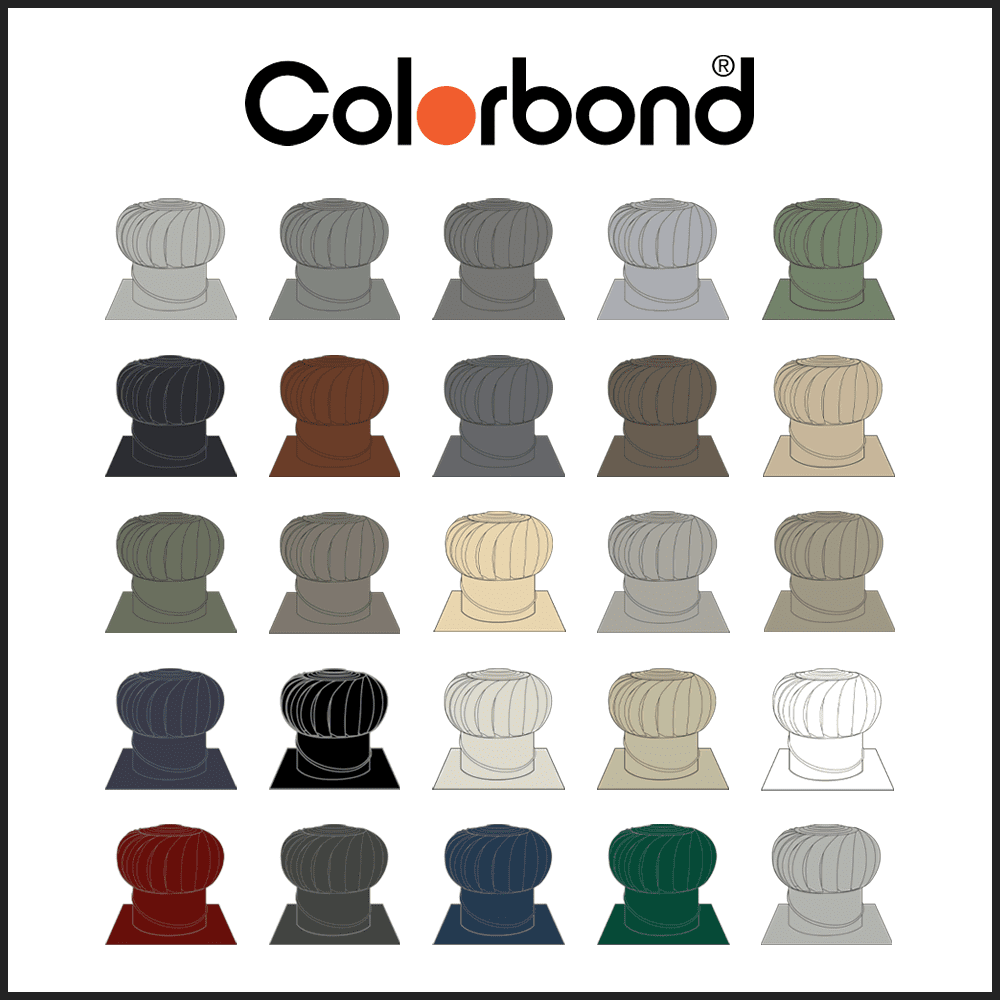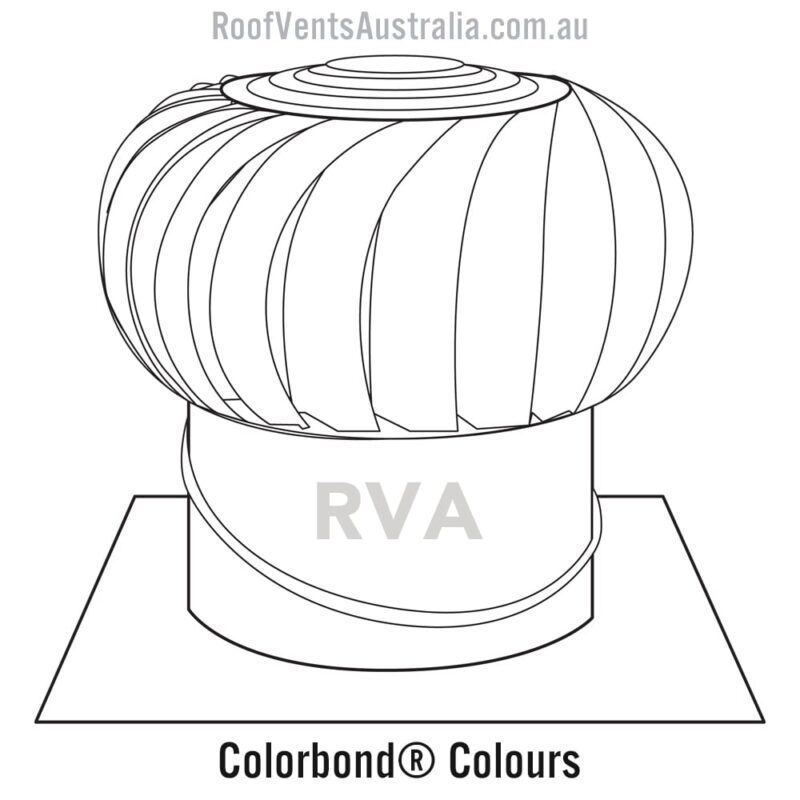Whirlybird Roof Vents Supplied & Installed
Price range: $572.00 through $1,430.00 & Free Shipping
Having issues ordering? Use our order form Instead.
Spinaway or Windmaster
Alum Body – Mill / Colorbond® – Same price tile / metal roof / 1 or 2 stories
2-3 Bed Hm (2 vents) – 3-4 Bed Hm (3 vents) – 4-5 Bed Hm (4 vents)
If you have a 3 level home – Call us
Description
**Maximising Ventilation Efficiency in Australian Homes: A Comprehensive Guide**
In the scorching Australian summers and chilly winters, maintaining optimal indoor temperature without skyrocketing energy bills can be a challenge. Proper roof ventilation is essential for regulating indoor temperatures, reducing energy consumption, and enhancing overall comfort. Among the plethora of ventilation options available, whirlybirds, roof vents, and turbine vents stand out as popular choices. In this comprehensive guide, we’ll delve into the intricacies of roof ventilation, addressing common questions and concerns surrounding installation, costs, effectiveness, and maintenance.
**1. Understanding Costs:**
When considering roof ventilation options, cost inevitably becomes a significant factor. The cost of installing a whirlybird typically ranges from $200 to $400, depending on factors such as brand, materials, and installation complexity. Labour costs for installing a roof vent vary based on the type of vent and the intricacy of the installation process, averaging between $150 to $300 per vent. Installing a roof turbine vent can cost between $300 to $600, considering similar factors.
**2. Evaluating Effectiveness:**
While whirlybirds have been a popular choice for many homeowners, alternative options may offer superior performance. Ridge vents, for instance, provide continuous ventilation along the entire roofline, ensuring more efficient airflow compared to individual turbine or whirlybird vents. Additionally, solar-powered vents offer the advantage of operating silently and require no electricity, making them a sustainable and cost-effective alternative.
**3. Identifying Drawbacks:**
Despite their popularity, whirlybirds come with certain disadvantages. They rely solely on wind power for operation, rendering them ineffective during periods of low wind. Moreover, whirlybirds may develop leaks over time, particularly if not installed correctly or maintained adequately.
**4. Optimal Placement:**
The placement of roof vents, including whirlybirds, significantly impacts their effectiveness. For optimal performance, vents should be strategically positioned to facilitate the expulsion of hot air and moisture while ensuring proper airflow throughout the attic space. Placing whirlybirds near the roof’s peak enhances their ability to harness wind power effectively.
**5. DIY vs. Professional Installation:**
While some homeowners may opt for a DIY approach to save on installation costs, it’s crucial to recognize the complexities involved in proper vent installation. Incorrect installation can lead to ventilation inefficiencies, leaks, and even structural damage. Therefore, seeking professional assistance ensures the vents are installed correctly and optimally positioned for maximum effectiveness.
**6. Maintenance and Longevity:**
Regular maintenance is essential for prolonging the lifespan and effectiveness of roof vents, including whirlybirds. Routine inspections should be conducted to detect any signs of damage or deterioration, such as leaks or worn bearings. Additionally, cleaning the vents periodically prevents the accumulation of debris, ensuring unobstructed airflow.
**7. Addressing Common Concerns:**
– Contrary to misconception, whirlybirds do not make houses colder in winter. Instead, they help regulate indoor temperatures by expelling excess heat and moisture.
– While whirlybirds may leak during heavy rainfall if improperly installed or maintained, proper installation and maintenance mitigate this risk.
– Whirlybirds do not require wind to operate; they can harness even gentle breezes to facilitate airflow.
– Whirlybirds are compatible with various roof types, including tiled roofs, making them a versatile ventilation solution.
**8. Determining Optimal Ventilation:**
The number of roof vents required for a house depends on factors such as the roof size, attic space, and climate conditions. As a general guideline, one vent per 100 to 150 square feet of attic space is recommended to ensure adequate ventilation.
**Conclusion:**
In conclusion, choosing the right roof ventilation solution is crucial for maintaining a comfortable indoor environment and reducing energy costs, especially in the Australian climate. While whirlybirds remain a popular choice, alternative options such as ridge vents and solar-powered vents offer compelling advantages in terms of efficiency and sustainability. By considering factors such as installation costs, effectiveness, and maintenance requirements, homeowners can make informed decisions to optimize ventilation in their homes, ensuring year-round comfort and energy efficiency.
Additional information
| Colour Options | 1. Let Us Match It For You, Basalt, Classic Cream, Cottage Green, Cove, Deep Ocean, Dune, Evening Haze, Gully, Ironstone, Jasper, Mangrove, Manor Red, MATT – Basalt (no extra cost), MATT – Dune (no extra cost), MATT – Monument (no extra cost), MATT – Shale Grey (no extra cost), MATT – Surfmist (no extra cost), Mill Finish, Monument, Night Sky, Pale Eucalypt, Paperbark, Shale Grey, Surfmist, Terrain, Wallaby, Windspray, Woodland Grey |
|---|---|
| Brand | Spinaway 10 Years Warranty, Windmaster 15 years Warranty |
| Vent Supplied & Installed | 1 Roof Vent S&I, 2 Roof Vents S&I, 3 Roof Vents S&I, 4 Roof Vents S&I |
| Location | Greater Sydney |



